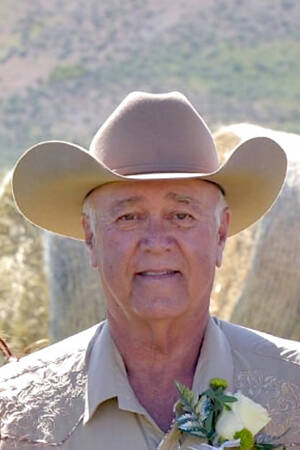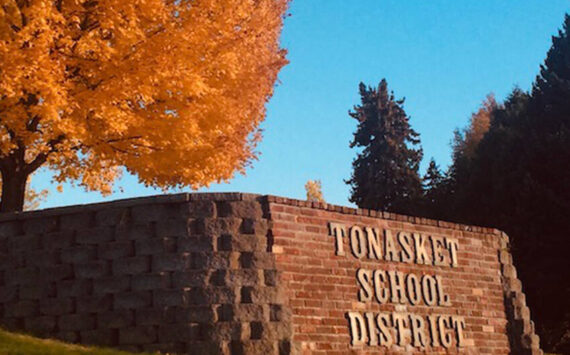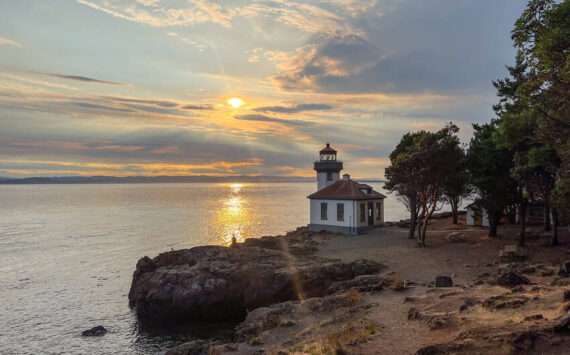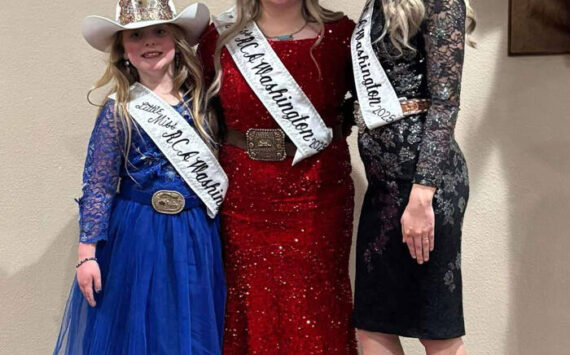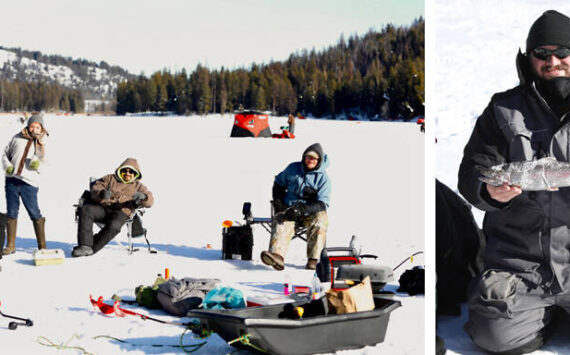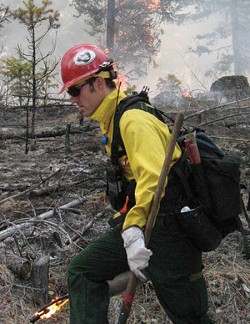 A firefighter continues to set fire while a ponderosa pine burns up in a crown fire behind him. Crown fires can send flames as much as 300 feet into the air.” title=”352a” width=”” height=”” class=”size-FULL”>
A firefighter continues to set fire while a ponderosa pine burns up in a crown fire behind him. Crown fires can send flames as much as 300 feet into the air.” title=”352a” width=”” height=”” class=”size-FULL”>
Photos by Amy Veneziano
A firefighter continues to set fire while a ponderosa pine burns up in a crown fire behind him. Crown fires can send flames as much as 300 feet into the air.
TONASKET – Fire.
It’s the dirtiest of the four-letter words for many home owners, farmers, ranchers, recreation seekers and others across the dry, arid west.
It’s the summertime worst case scenario, an out-of-control blaze that eats up miles of forest, towns and homes.
But firefighters and others entrusted with protecting both the backcountry and private lands know that the best way to fight it is with another form of fire, a cleaner version, controlled by those around it.
“We’re emulating what Mother Nature would do,” said Tonasket District Ranger Mark Morris. “If Mother Nature’s happy, we’re happy.”
Last week, the Tonasket Ranger District of the Okanogan National Forest completed work on a 1,000 acre swath of the Upper Aeneas, lighting a fire by hand and chemical-infused ping-pong balls dropped from a helicopter.
But the flames are the result of a long effort in preparing the area for burning.
The Forest Service first arranged a commercial logging effort in the area to be burned, Morris said.
Commercial loggers remove small-diameter trees and logs, a boost for the economy. Once they’re done, the forest service continues to remove “ladder fuels” or the piles of discarded branches, weeds and brush deemed unusable by loggers. At this point, the forest is much less dense.
Then, Morris and others in the area and the Forest Service walk the area to determine the needs of the spot.
The next step is an important one.
“We hold meetings with neighbors and people who are interested to determine what’s wanted and needed in the area,” Morris said. If the right permits are acquired, they can do some burning on private land, he said. “We have to have local support to get anything done.”
Once the meetings are through, a fire treatment plan and smoke management plan is designed.
Then the waiting begins.
In order to burn, the state Department of Natural Resources must approve their plans and decide that weather and other conditions allow for burning on a certain date. The DNR uses a Smoke Management Plan which is administered by the Department of Ecology, under authorization of the federal Environmental Protection Agency, which enforces the nation’s Clean Air Act, according to Swedberg.
“There’s a formula for burning,” Morris said. “We look at the air conditions and the air quality on the day we’re planning to burn.”
Last week’s fire received notice at 8 a.m. Tuesday morning that their plan was a go. By 10 a.m., the flames had begun.
“It’s a gamble that we might get approval on any given day,” Morris said. “But it’s the process we’re forced to live with.”
Nearly a century of forest mismanagement requires this new process, according to Richy Harrod, a fire ecologist for the Okanogan and Wenatchee National Forests based in Wenatchee.
“It took 100 years for the forests to get into this condition,” Harrod said. “You can’t fix it overnight. It takes time and money.”
Before Europeans settled the West, low-grade fires would sweep through the ponderosa pine forests every 6-20 years, according to an informational video. The trees were widely spaced and there was little, if any, ground cover besides high grasses, which burned quickly. The Native Americans had also used to control the flames, producing grazing land, better crops and more open spaces.
“The Indians burned with forethought,” said Sinlahekin Wildlife Area manager Dale Swedberg. “They were using fire – it was the most powerful tool they had for influencing their environment.”
Low-grade, recurring fire is good for the forest, Swedberg said.
“Heat is needed to stratify certain seeds, such as lupine,” he said. “Some plant seeds exposed to fire smoke have a phenomenally higher germination rate than seeds not exposed. The pH of ash also creates better growing conditions in the soil. Charcoal in the soil also increases the soil’s capacity to retain moisture. … ” The list, he said, goes on for why fire is necessary.
European settlers saw the flames as destructive. The early Forest Service focused on extinguishing every trickle of smoke and allowed plants and shrubs to grow in.
Today, 700,000 acres of the Okanogan-Wenatchee National Forests are considered dense, with fir trees, heavy shrubs, pine duff and diseases. Any wild fire can quickly get out of control, such as the Tyee Fire in 1994, with a net cost of at least $109 million dollars and scorching more than 200,000 acres in Chelan and Okanogan counties.
Heavy undergrowth allows the fire to climb tall, old ponderosa pine trees like a ladder, Swedberg said. Once the flames hit the lower branches, various fire-fighting agencies can only watch as a crown fire rages out of control, shooting flames 200-300 feet into the air.
“Before, all we could do was stand back and watch. There’s no way we’d put anybody in there with a crown fire,” Harrod said.
Controlled burns change all that.
By clearing the brush out, the natural conditions of the forest can return, Swedberg said.
“Prescribed fire is an integral part of the fire-dependent ecosystem,” he said.
Morris agreed.
“Once a prescribed fire has occurred, that stand of trees is far more resistant to other wildfires coming through,” he said. “Some of these trees are 150 to 200 years old, and they’re much healthier with less competition for water. They can survive recurring, low-intensity fires.”
Forest fires coming through in the future – and, according to Morris, they will happen – will burn at a low intensity and be brought under control quickly, rather than raging for months while homes and businesses burn.
“It’s better to burn on a day with a plan than be forced into fighting a wildfire,” Swedberg said.
There are about half a dozen projects totaling 7,000 acres of land left to be cleared and burned in the Tonasket district, Morris said. “We’ve been working on this area since 2002 and we probably have about five years left,” he said. “When you have 10,000 acres to manage, it’s going to take a long time to get it done. “
But the time is worth it, he said.
“As a manager, it feels good knowing that I’ve helped this forest to sustain over a longer period,” he said.
It’s better for the health of the forest and local residents and far better for taxpayers.
The district has a $135-dollar-an-acre budget for controlled burns, Morris said. That includes costs for the helicopter, transportation for the 22-person fire crew that traveled from Naches and the actual on-ground costs.
“In the Tonasket district, we try to stretch our budget to make every dollar count,” he said.
A wildfire on that same 1,000-acre piece of land, if clearing and logging hadn’t occurred, is frighteningly higher.
“A wildfire would easily be 5,000 to 10,000 acres, with the potential to spread farther,”
Harrod said. “It would cost $300,000 to $500,000 per day for a wildfire this size. If it takes 10 to 15 days to get it under control, that’s $5-7 million dollars, easily.”
All from tax dollars.
“The comparative costs between prescribed burns and a wildfire are huge.”
Those numbers don’t take into account firefighter safety or lingering smoke in the area, which is also a health concern, Harrod said.
While pleased with the work that’s currently going on, Harr
od said more is needed.
“The Okanogan and Wenatchee National Forests burn 8,000 to 10,000 acres a year, and thinning 15-25,000 acres,” he said. “That’s woefully short.”
Harrod said the department should be doing at least four times as much burning and thinning, bringing their total acreage treated to about 150,000 acres per year.
“It’s a big job to do,” he said.
But a very necessary one, as more campers, hikers and boaters flood the forests and increasing summer temperatures, lower rainfall and lower snow levels continue to create drought-like conditions.
“There’s an increased hazard for more fire as there’s more public use in the area,” Swedberg said.
It’s a continued effort to inform the public and policy makers of the necessity of controlled burns.
“Excluding fire doesn’t work,” Swedberg said. “Mother Nature doesn’t work that way. It’s a challenge to educate the public and gain funding and support from politicians.”
Swedberg is also a member of the North Central Washington Prescribed Fire Council, which is working with its members to achieve better fire policy.
The board has received letters of support from many seemingly disconnected agencies, including the Okanogan County Board of Commissioners, Conservation Northwest, the Okanogan County Cattlemen’s Association, the Bureau of Land Management, the USDA, Backcountry Horsemen and the Wilderness Society. Steering Committee members include private landowners and managers, the U.S. Forest Service, the Department of Fish and Wildlife, the Department of Natural Resources, the Colville Tribes, the Washington Forest Protection Association, Washington State Parks and the WSU Co-Op Extension.
“Hopefully the prescribed fire council can continue working with the state to recognize the trade-off between a prescribed fire with a little smoke,” Swedberg said.
Ultimately, like it or not, fire will happen, he said.
“No fire is not an option. No smoke is not an option.”
